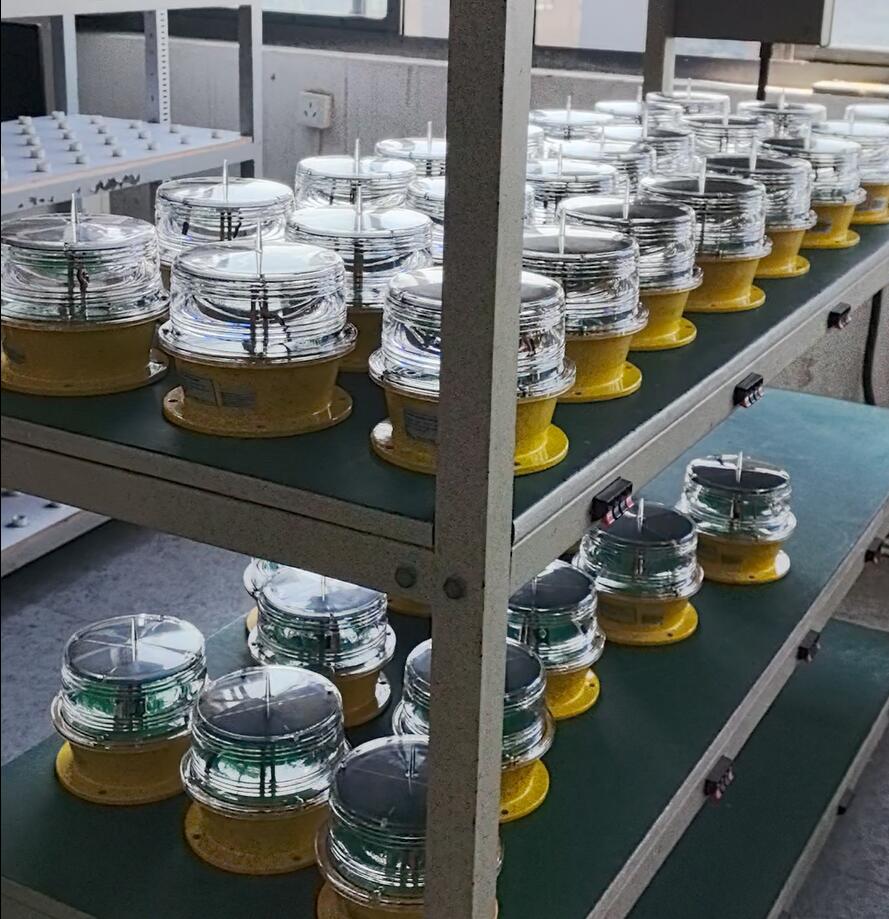
In an era where sustainable energy solutions are becoming increasingly crucial, solar powered obstruction lights have emerged as a remarkable innovation. These lights are not only functional but also play a vital role in ensuring safety and visibility.
Solar powered obstruction lights are designed to mark obstacles that pose a potential hazard to aircraft, ships, and other modes of transportation. They are essential for preventing collisions and ensuring the smooth flow of traffic. These lights are powered by solar energy, which makes them an environmentally friendly alternative to traditional lighting systems.
One of the key advantages of solar powered obstruction lights is their reliability. Since they are powered by the sun, they do not rely on an external power source. This means that they can operate continuously, even in remote areas where access to electricity is limited. Additionally, solar powered lights are less likely to fail due to power outages or other electrical issues.

Another benefit of these lights is their cost-effectiveness. While the initial investment may be higher than that of traditional lights, the long-term savings are significant. Solar powered obstruction lights require minimal maintenance and do not incur any electricity costs. This makes them an attractive option for organizations looking to reduce their operating expenses.
solar
DFV
56
FVB
The technology behind solar powered obstruction lights is constantly evolving. Modern lights are equipped with advanced solar panels that can efficiently convert sunlight into electricity. They also feature high-quality LEDs that provide bright and consistent illumination. Some models even come with intelligent control systems that can adjust the brightness of the lights based on the surrounding environment.
In addition to their practical applications, solar powered obstruction lights also have aesthetic appeal. They can be designed to blend in with their surroundings or stand out as a decorative element. This makes them suitable for use in a variety of settings, from industrial areas to tourist attractions.
The use of solar powered obstruction lights is not limited to aviation and maritime industries. They are also being used in other applications such as wind turbines, communication towers, and tall buildings. These lights help to ensure the visibility of these structures and prevent accidents.

Despite their many advantages, there are some challenges associated with solar powered obstruction lights. One of the main challenges is the reliability of the solar panels. In some cases, the panels may be damaged by harsh weather conditions or vandalism. Additionally, the performance of the lights may be affected by factors such as cloud cover and seasonal variations in sunlight.
To address these challenges, manufacturers are constantly working on improving the durability and performance of solar powered obstruction lights. They are developing new materials and designs that can withstand extreme weather conditions and provide consistent illumination. Additionally, research is being conducted on ways to improve the efficiency of solar panels and energy storage systems.
Solar powered obstruction lights are a revolutionary technology that offers a sustainable and cost-effective solution for marking obstacles and ensuring safety. With their reliability, aesthetic appeal, and environmental friendliness, these lights are set to play an increasingly important role in various industries. As technology continues to advance, we can expect to see even more innovative applications of solar powered obstruction lights in the future.